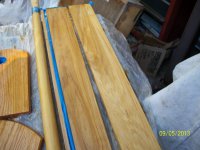HowardH
Member
I am going to build a small open top box - about 200mm square by 100mm or so high as a "catch all" box for wallet, keys, coins, etc. I plan on using highly figured wood and want to use lacquer and then polish it to a high gloss using the method shown by Sedge in his Festool Live video. With such small pieces, I was wondering if I should cut all the pieces and finish them first before assembling the box? My thinking is I could lay them all out on a table where it would be much easier to do the polishing vs. trying to do it after the box is glued up. With such small pieces, I would probably double-sided tape them to the table to prevent them from sliding around while polishing. Or would I be better off doing the construction first and applying the finish later?

